The 11th edition of my year of fairy crowns for June 13th features the indigo-blue spikes of woodland sage Salvia nemorosa ‘May Night’ (‘Mainacht’) and ‘Caradonna’; the soft lavender-blue of ‘Dropmore’ catmint (Nepeta x faassenii); the airy purple globes of Allium cristophii; the tiny white flowers of graceful Clematis recta ‘Purpurea’; the almost-hidden flowers of native ninebark (Physocarpus opulifolius); and a few cheerful sprigs of old-fashioned yellow loosestrife (Lysimachia punctata).
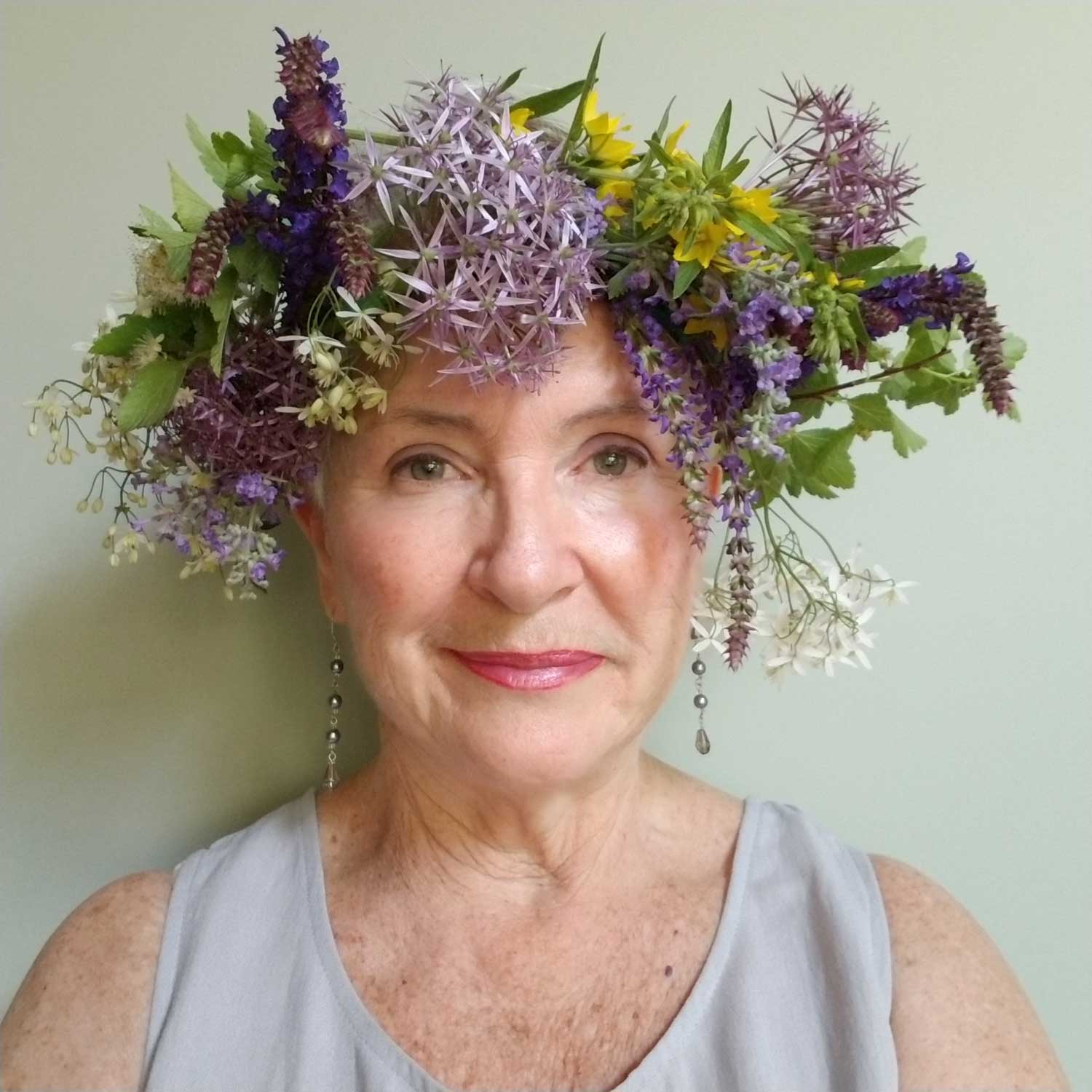
My front yard pollinator garden begins its serious work in June, when the woodland sage (Salvia nemorosa) and catmint (Nepeta ‘Dropmore’) come into flower. It’s been a few weeks since the final brilliant tulips and camassia withered and the garden settled into a quiet green period.
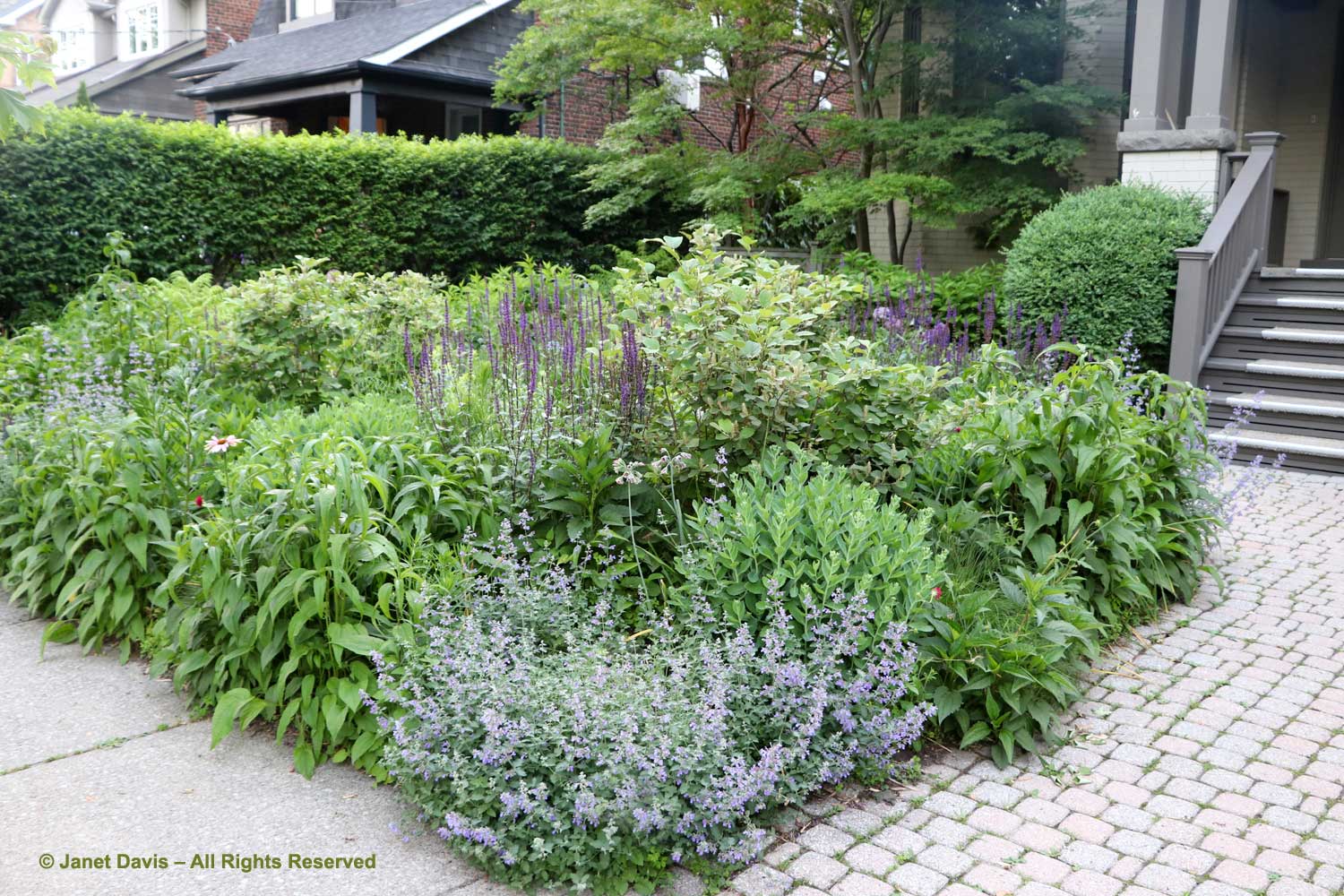
Now the sage’s deep-blue or pink spikes and catmint’s pale-lavender racemes impart a soft quality to this little garden amidst the lush foliage of the emerging summer perennials.
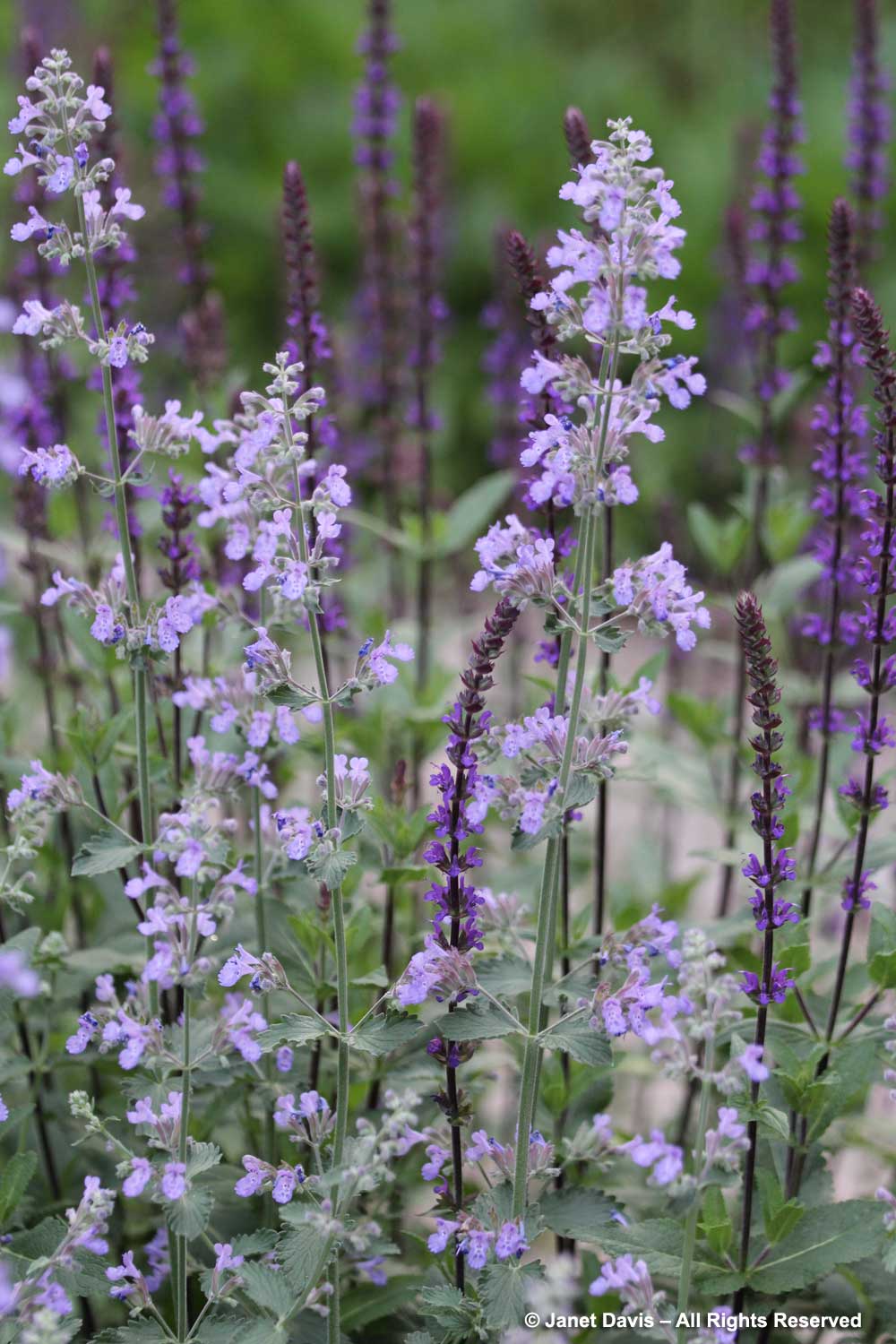
The spiked flowers of the woodland sage and the cloud-like blossoms of catmint contrast beautifully with each other. Though neither is native to my region – both originate in Europe – I had no hesitation in including them in my garden. Interestingly, ‘Dropmore’ catmint is an ultra-hardy Canadian cultivar bred in 1932 by Dr. Frank Skinner in Dropmore, Manitoba, a cross between Nepeta mussinii and N. ucranica. Its silvery, mint-scented foliage forms a large, attractive clump and is easy to divide in spring. My woodland sages are a mix of no-name varieties, most of which were included in a four-pack of perennials, along with milkweed, to support monarch butterflies.
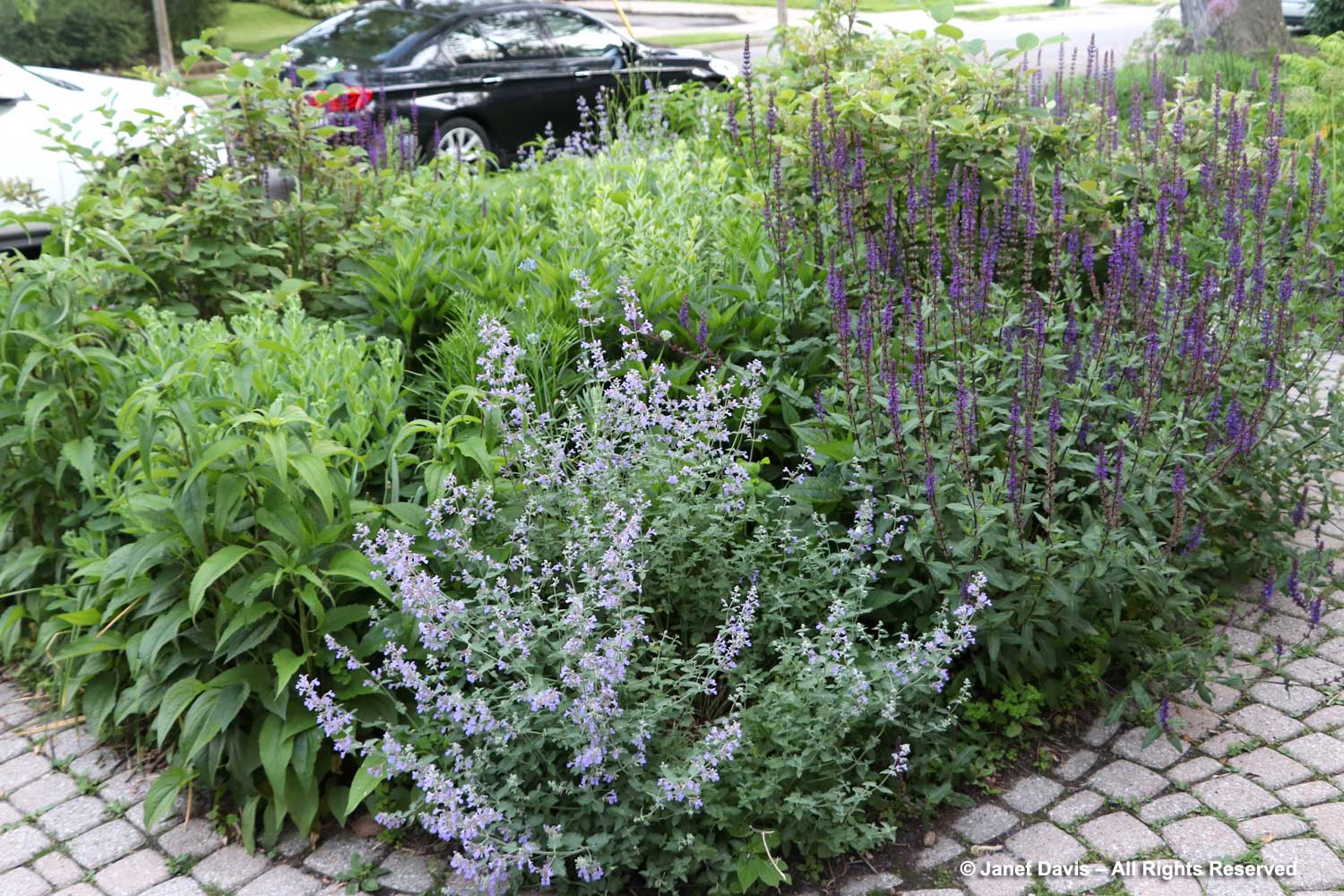
As a photographer, I have always had a keen interest in capturing the ageless evolutionary pact between flowers and insects that sees nectar and pollen exchanged for pollination services. Translated: I love photographing bees! And catmint with its bumble bees…
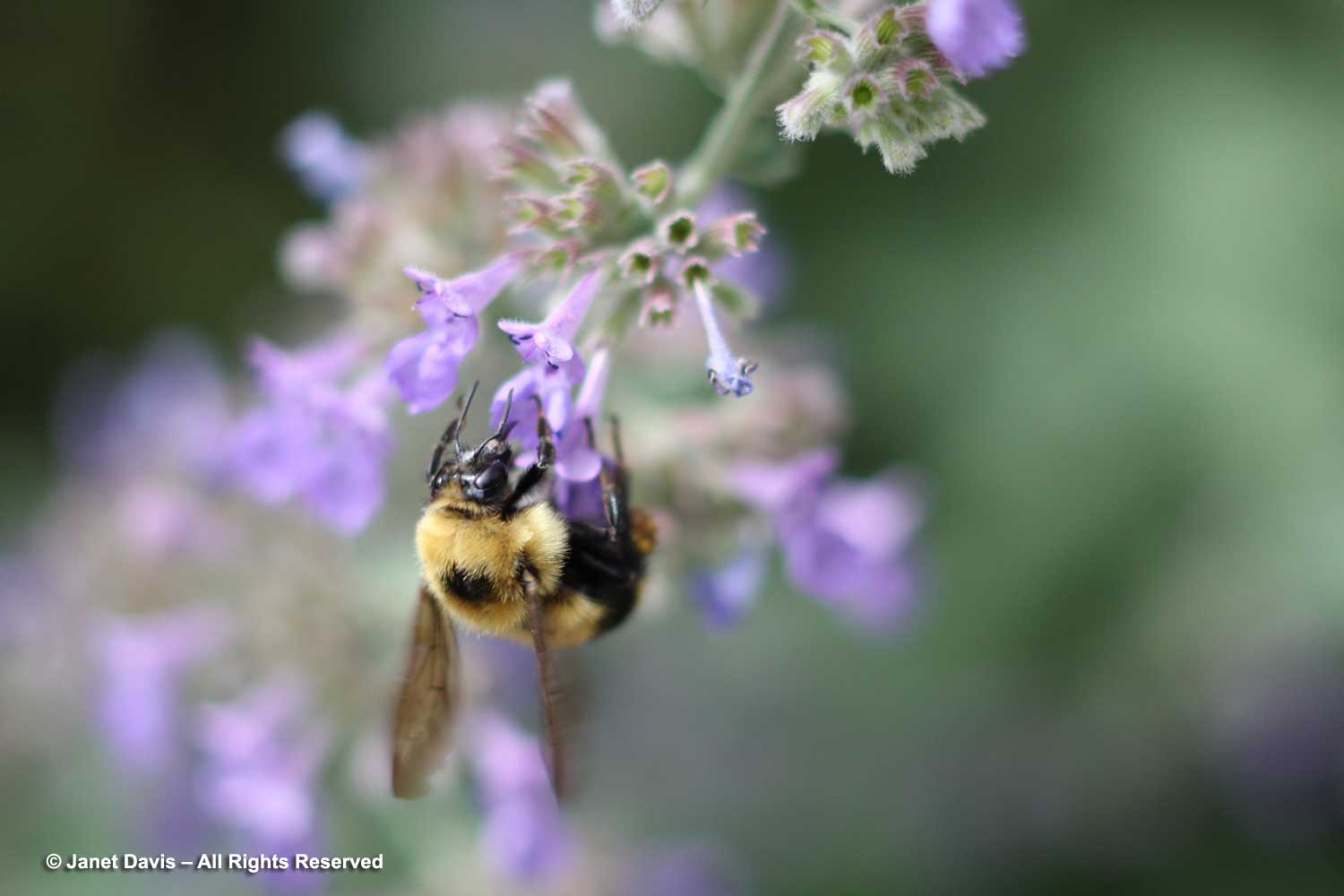
…. and sage with its honey bees are perfect models for insect photographers.
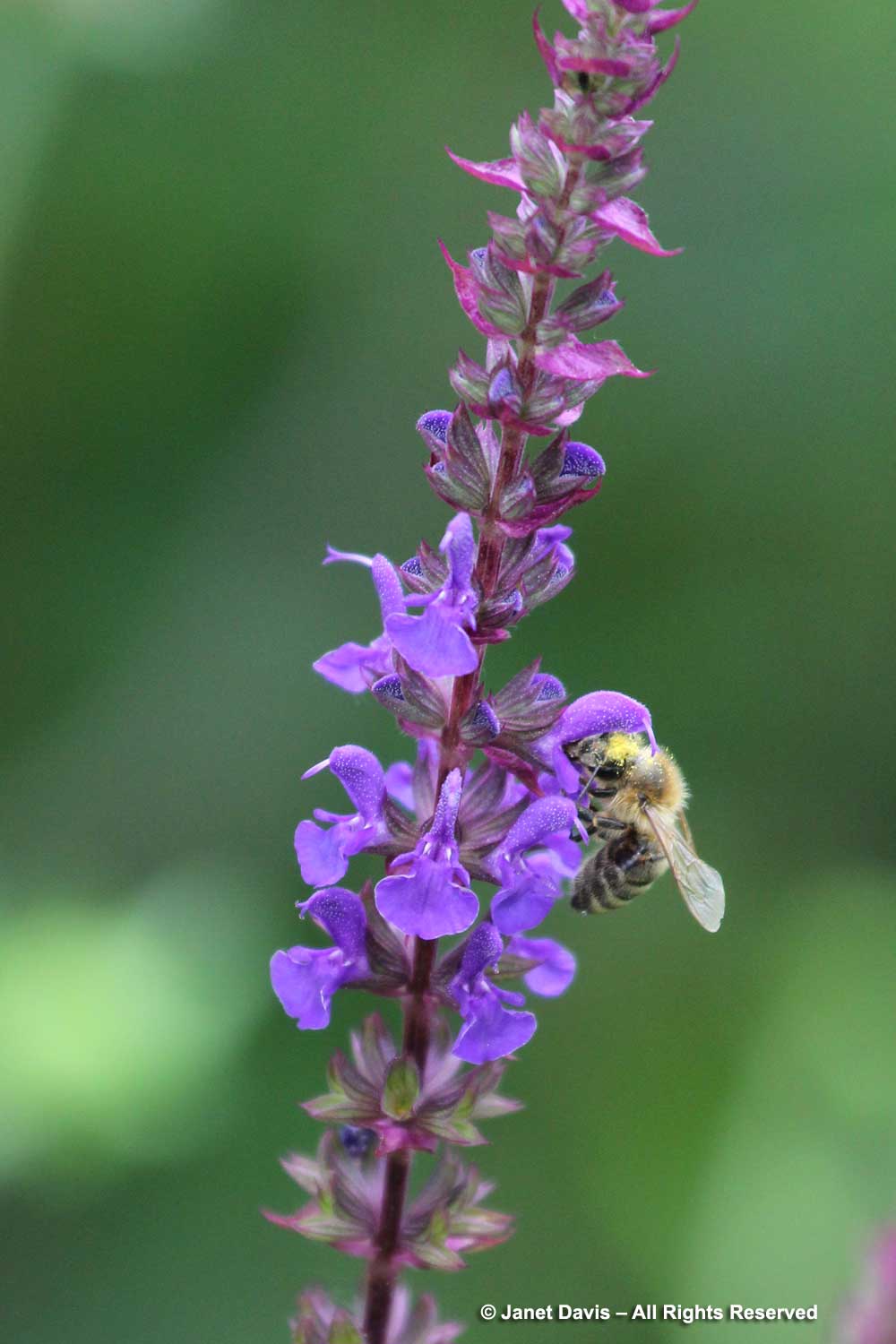
In the back garden, June brings the ebullient flowering of the herbaceous clematis, C. recta ‘Purpurea’. Unlike its vining cousins, this clematis – sometimes called ground virginsbower – is bushy and covered with masses of tiny, scented, white flower clusters.

Because its abundant, slender stems grow about 4 feet tall (1.3 m), it tends to collapse in a heap once in full bloom, so I added a filigreed, iron screen behind it to make it fall forward, at least. It benefits aesthetically from its juxtaposition with the white-edged hostas nearby.
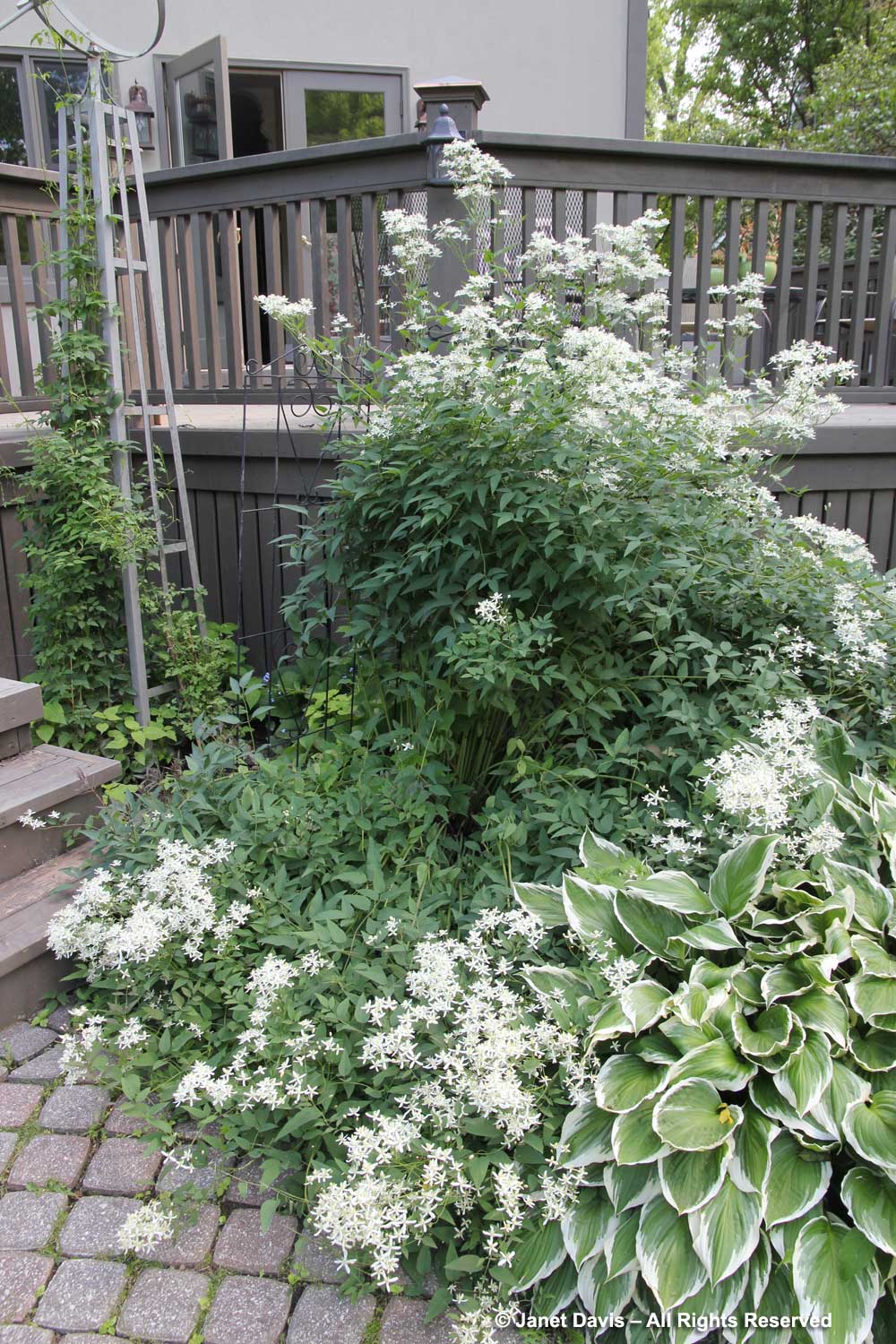
It also attracts native bees and hoverflies and makes a useful, frothy filler in June bouquets.
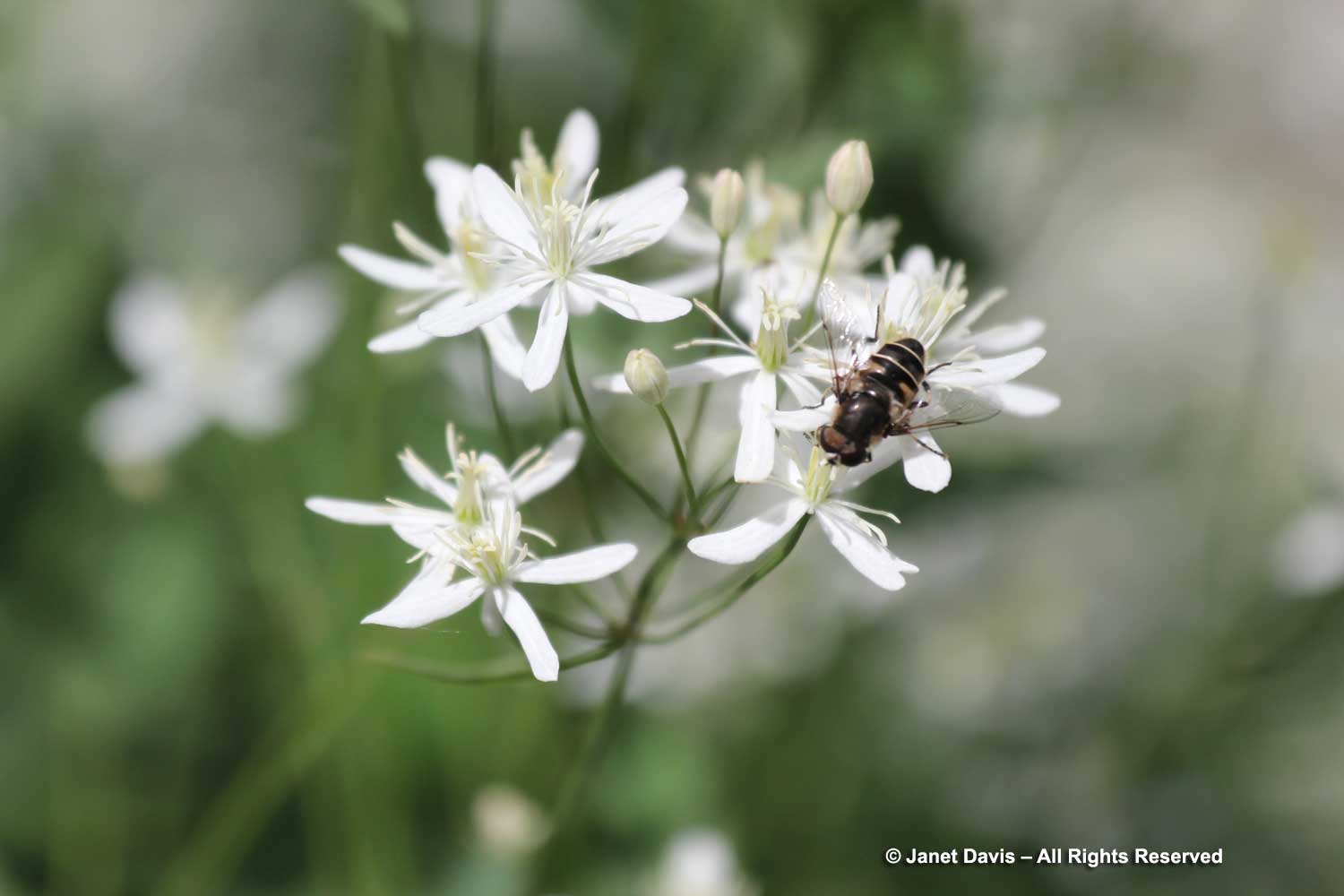
There’s an old-fashioned perennial that flowers in one of my borders now called yellow loosestrife (Lysimachia punctata). It’s one of those plants gardeners buy before they develop ‘sophisticated’ taste, and later find a comfort because they come back reliably each year, have no pests, and ask no special care. They are tough.
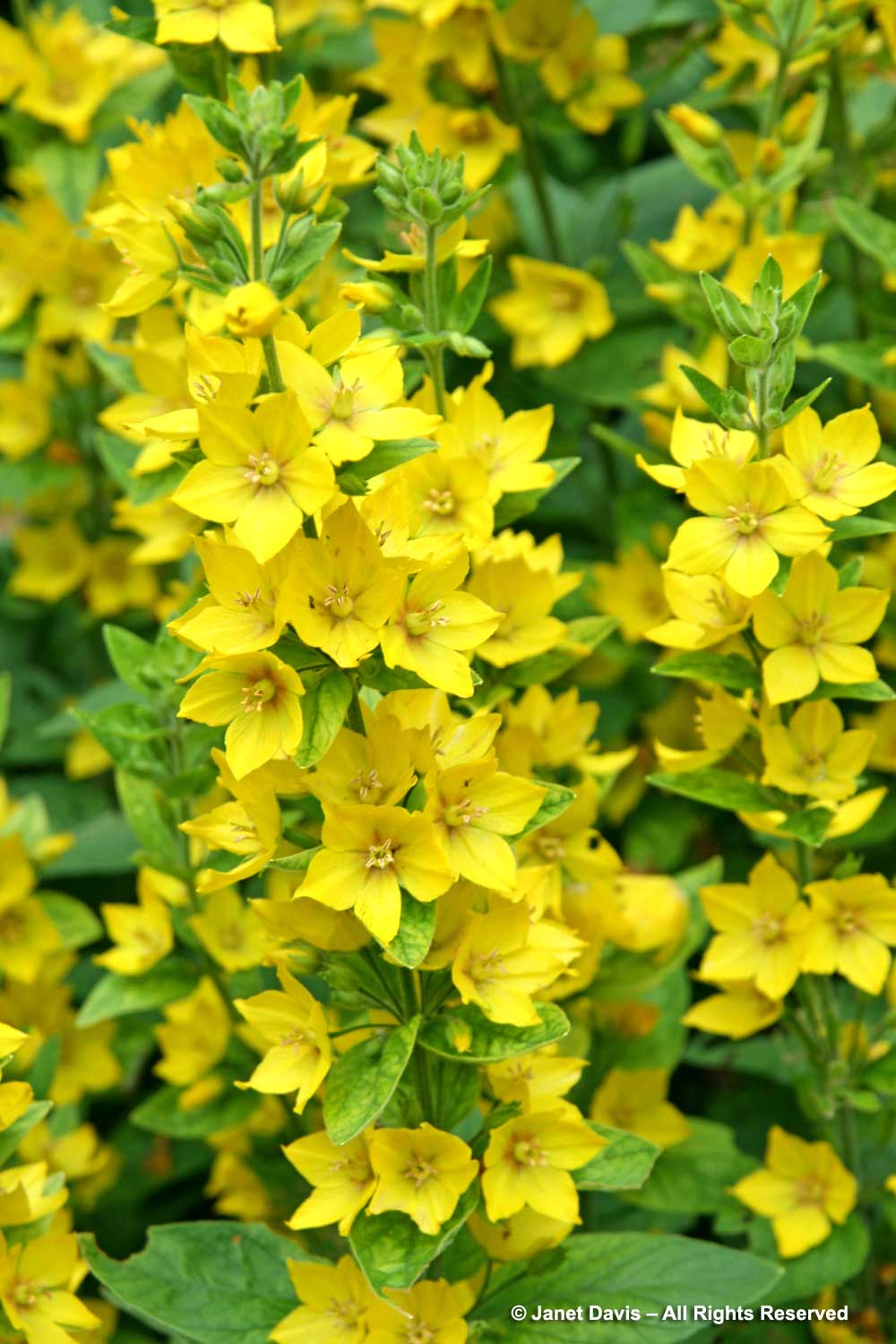
In the border, yellow loosestrife nestles itself between large hostas, tolerates an insistent regiment of ostrich ferns at its back, and manages to hold off June’s ubiquitous weeds, including enchanter’s nightshade, garlic mustard and wood avens. Weeds, of course, are part of the gardener’s lot and early summer is paradoxically the most joyfully floriferous and alarmingly out-of-control time of the gardening year. If attacked now, weeds can be kept at a manageable level. Or, as I have discovered, they can be largely ignored and the “manageable level” becomes a moving target. The secret is not to stress too much.
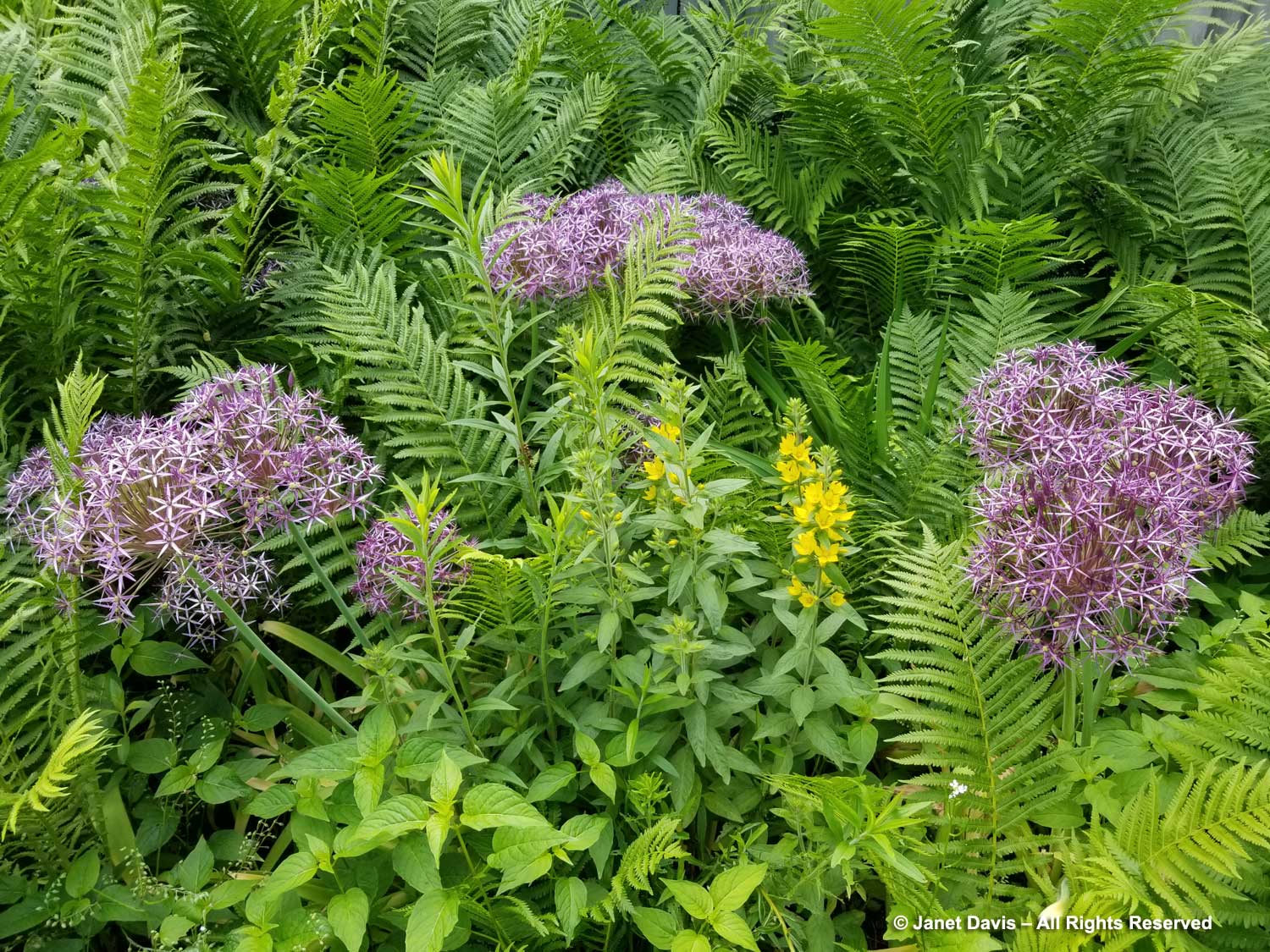
Beside the yellow loosestrife, I planted a few star-of-Persia alliums (Allium cristophii). They are now seeding through the border, their big, lilac umbels very attractive to bumble bees…..
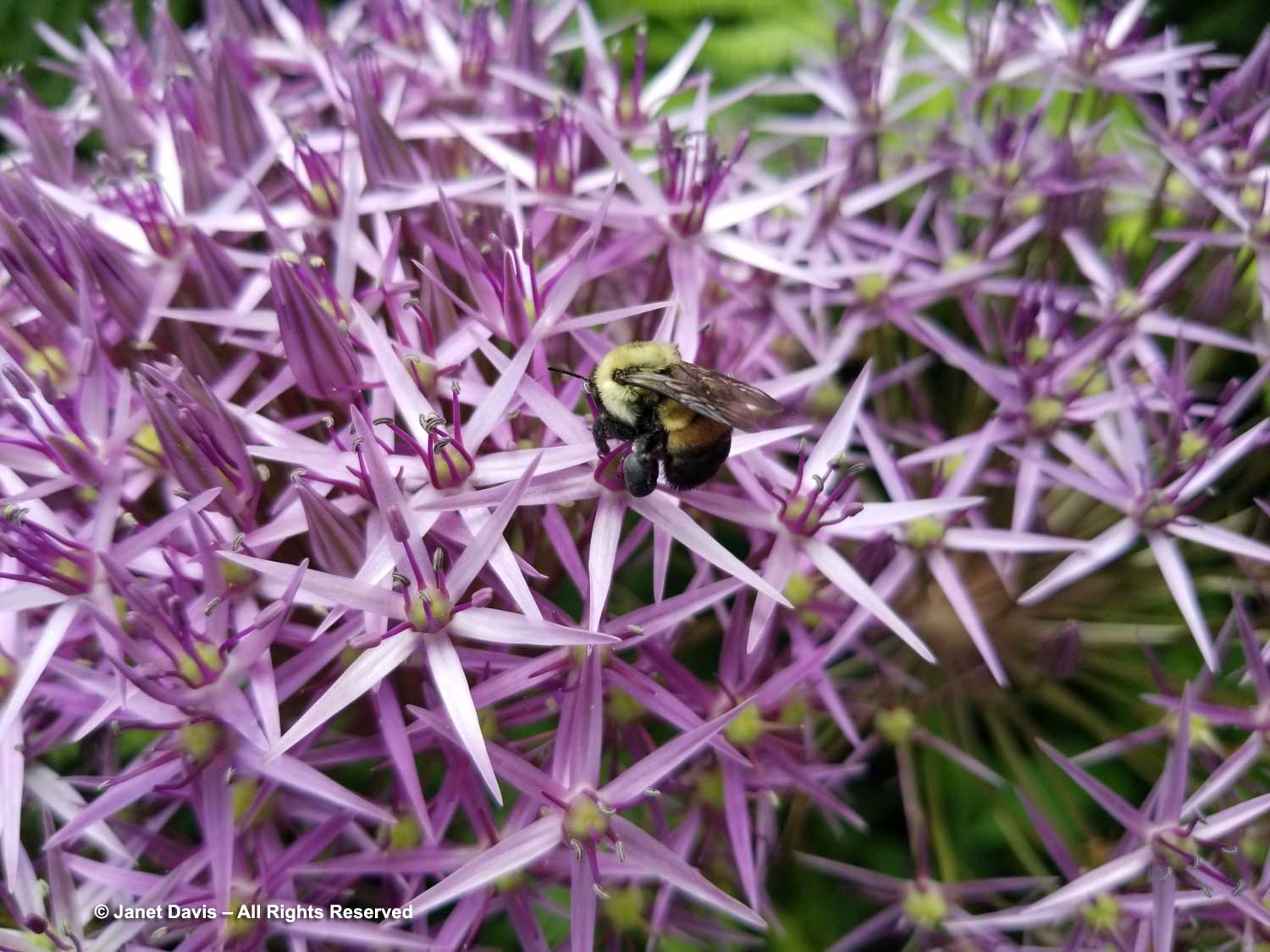
….. and other native bees like Agapostemon virescens.
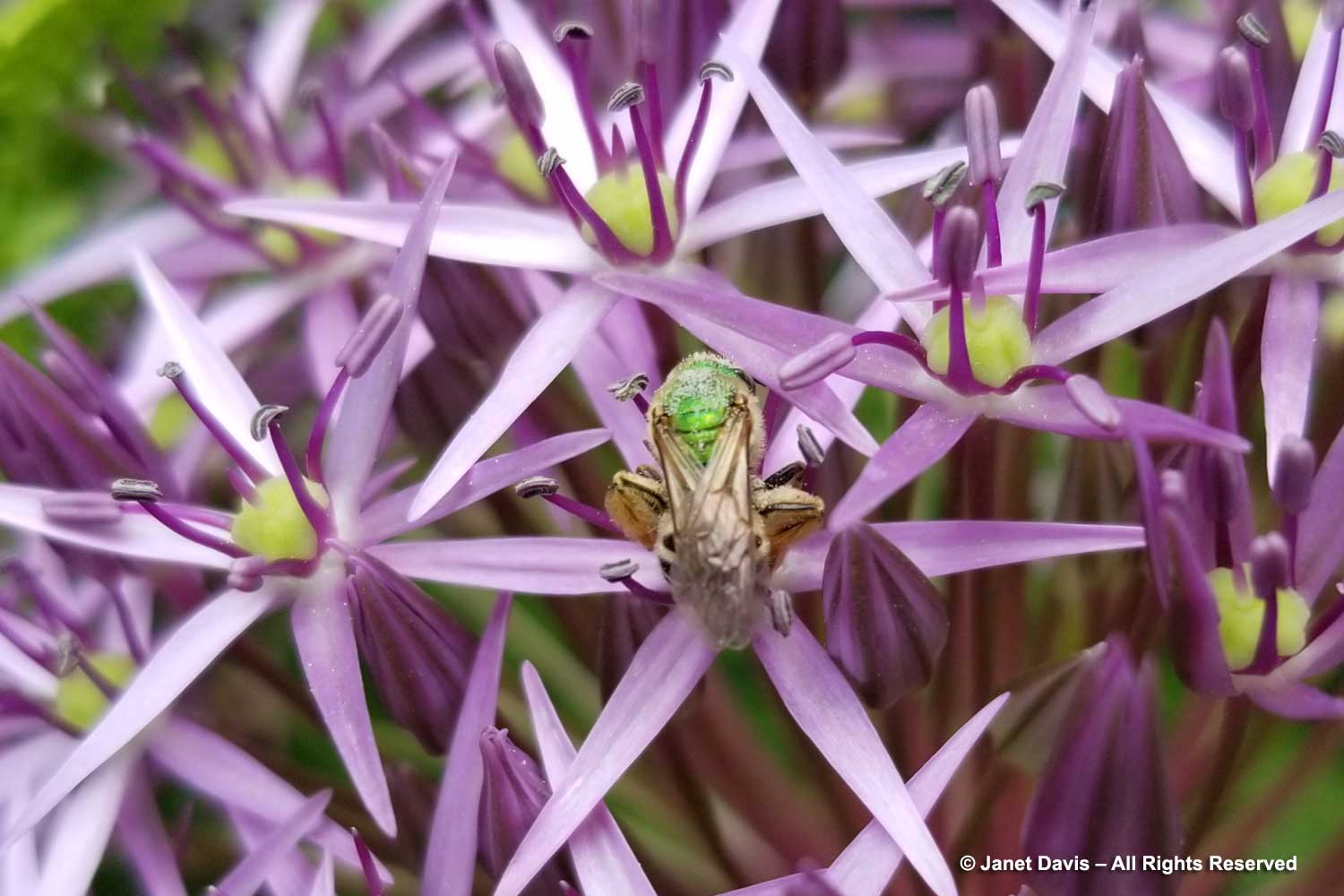
In a back corner of my garden is a large, native ninebark (Physocarpus opulifolius) that blooms now with spirea-like clusters of small, white flowers that cover the shrub and attract native bees.
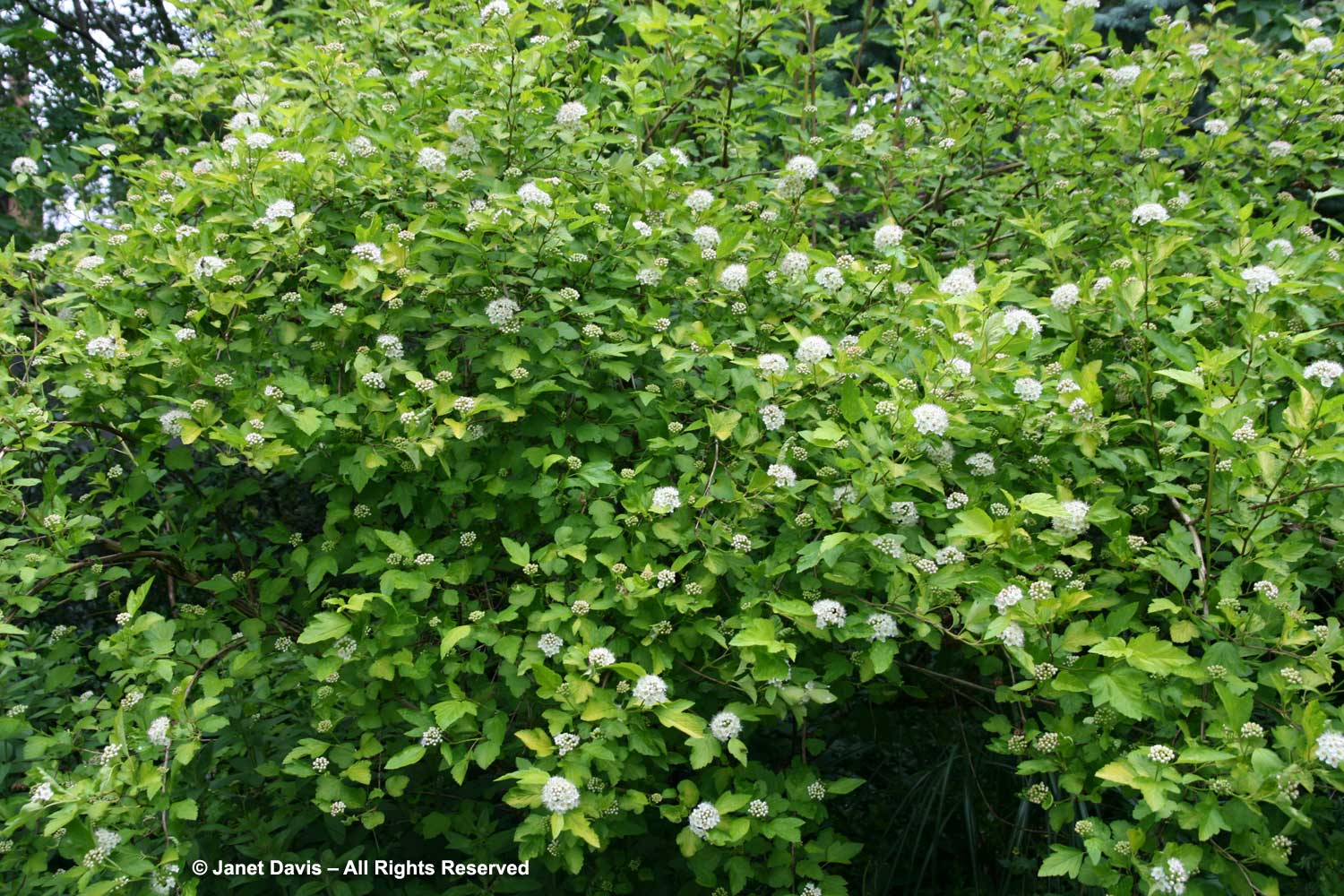
After the flowers fade, the seedheads turn an attractive red that seems like a second flowering (see below); in late autumn, the foliage turns yellow. Garden experts often describe ninebark as “coarse” and I have to agree; more problematic is that branches often die off and have to be removed. Like lilac, ninebark can be rejuvenated by pruning back the oldest stems to the ground, a practice that encourages the newer stems, more productive stems to grow.
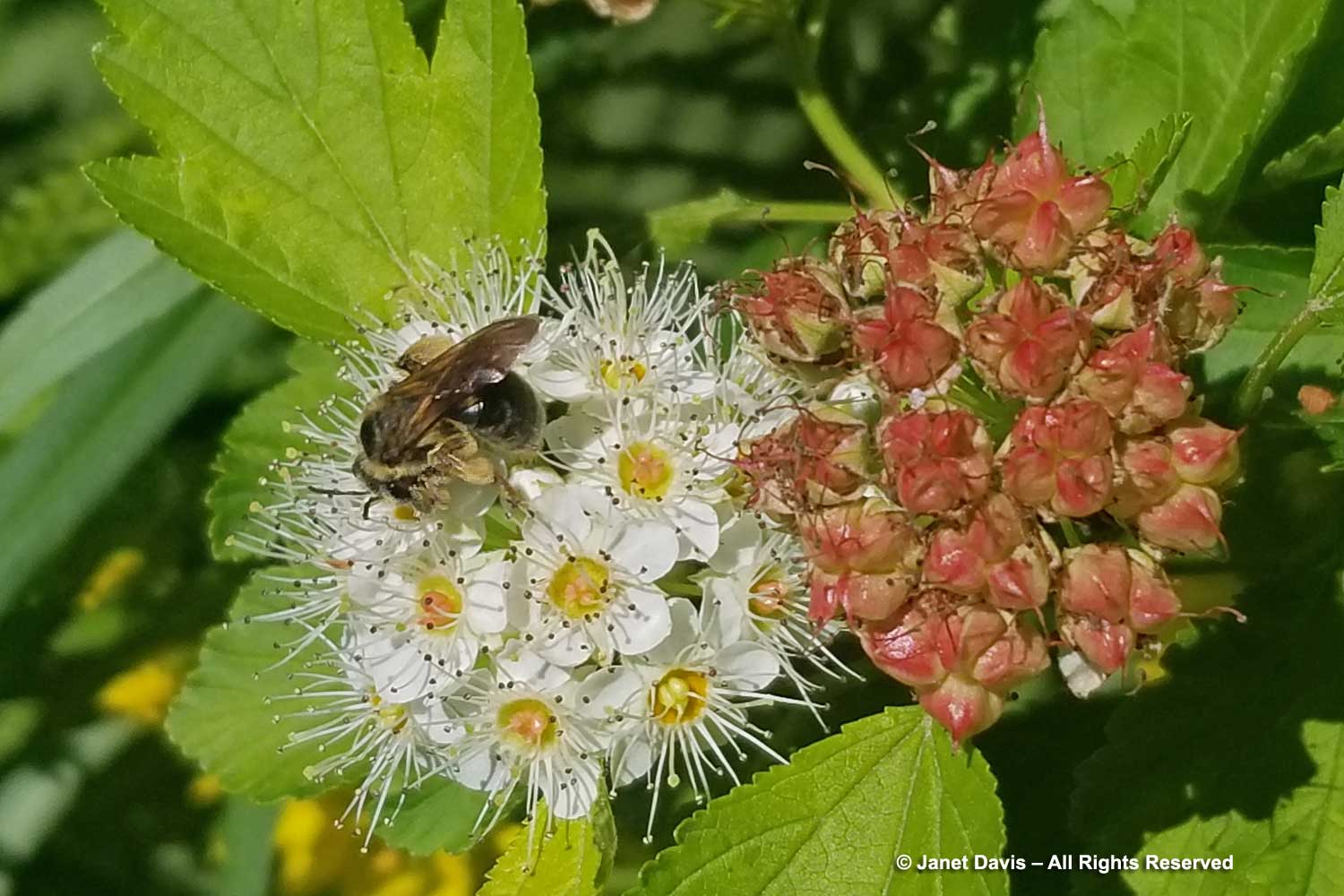
Finally, a “quiet” little bouquet to celebrate this “quiet” time in the late spring garden, before the summer perennials hit their stride.
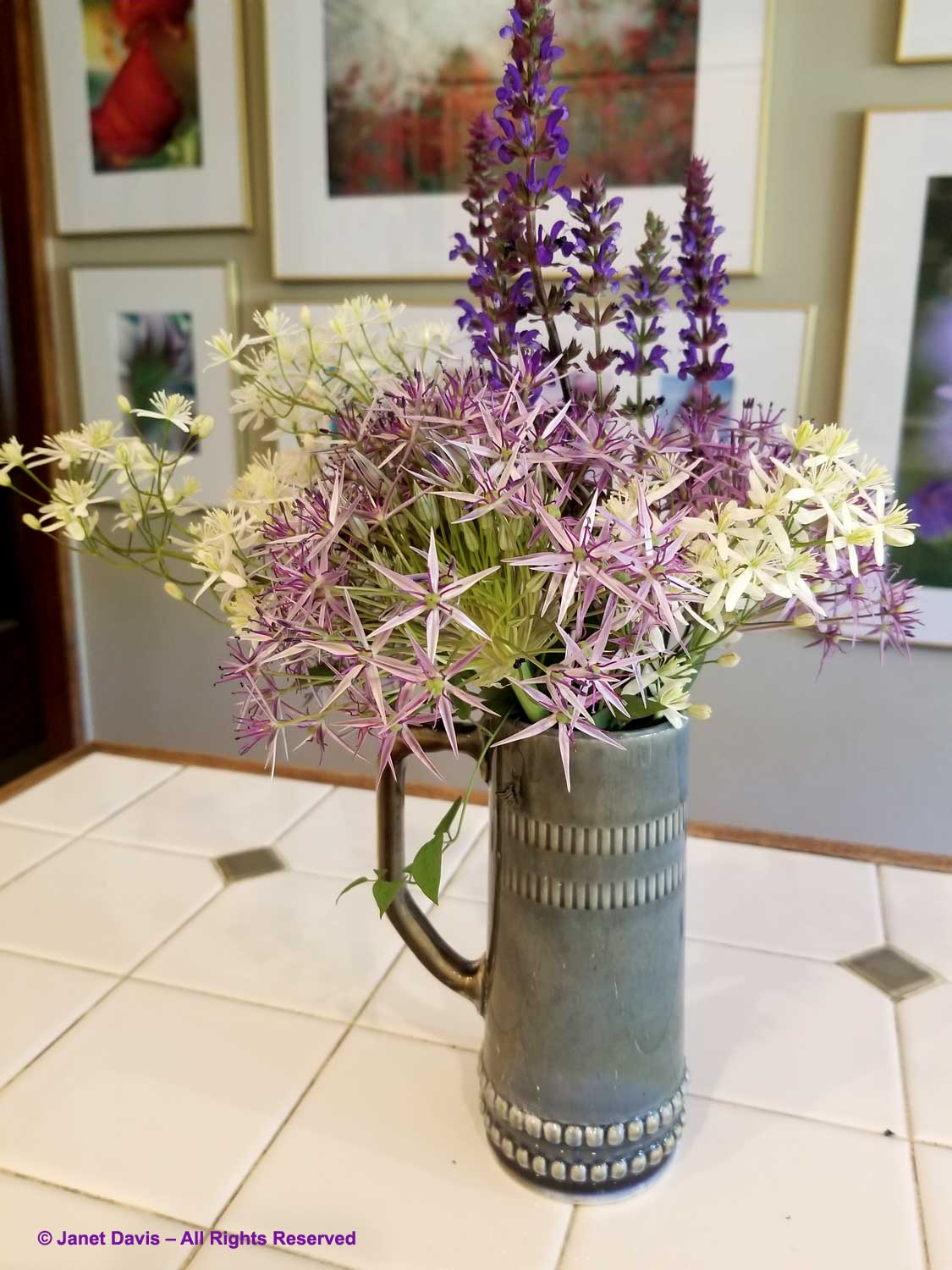
*********
Here are my earlier crowns and their stories:
#1 – Spring Awakening
#2 – Little Blossoms for Easter
#3 – The Perfume of Hyacinths
#4 – Spring Bulb Extravaganza
#5 – A Crabapple Requiem
#6 – Shady Lady
#7 – Columbines & Wild Strawberries on Lake Muskoka
#8 – Lilac, Dogwood & Alliums
#9 – Borrowed Scenery & an Azalea for Mom
#10 – June Blues on Lake Muskoka

I can’t decide which I love more – the fairy crowns, the garden, or the gardener. Thank you for a moment of beauty in the midst of our crazy times.
Thanks so much Vicki! Yes we need a little Tinker Bell in these times for sure!